07.04.2015: I had to go to Brussels today for some urgent business, which bothered me a bit as we had very poor weather over the Easter weekend and beautiful flying weather this morning. From the plane I could see one of the Airbus A330 of American Airlines in their new livery, definitely an improvement over their former, kind of old fashioned design.

Luckily I had a seat on left side, which gave me a nice view over the alps. That’s always a lift for my mood, and a compensation for getting up early.

08.04.2015: My business trip from yesterday was to finish a proposal for a research project under Horizon 2020, which we finally submitted early this afternoon (the deadline was 17:00). I decided to rewarded myself with a late afternoon flight over the alps, and it wasn’t difficult to convince my wife to join me as she also slowly feels the urge to be back up in the air after the quite long winter break .

We checked the slopes nearby, the skiing season seems over as all lifts were stopped.

In weather like this I normally just climb up to around 10’000 ft and enjoy the sun and the peace.


09.04.2015: Today two inspectors from the Swiss Accident Investigation Office (SUST) came to do some test flying with my SportCruiser. The reason is that our club’s factory built model suffered a broken nose landing gear, which they seem to consider worth a more detailed investigation.
Before flying with them I did some stall training on my own, knowing they would want to check stall behaviour too, For stalls I normally climb to at least 6’000 ft AMSL (ground in that area around 3’500 ft) just to have sufficient margin, even though I never actually observed any tendency of the SportCruiser to fall into a spin. Stall behaviour with a proper centre of gravity is actually quite benign, only when doing stalls with full flaps, full power and 30 degrees bank there is a quite sharp wing drop. But in that configuration one is actually hanging on the propeller. Even a wing drop from that situation is however easily recovered by just moving the stick back to neutral or a bit forward.
Being that high I could not refrain from circling the telecom installation on top of the Säntis.

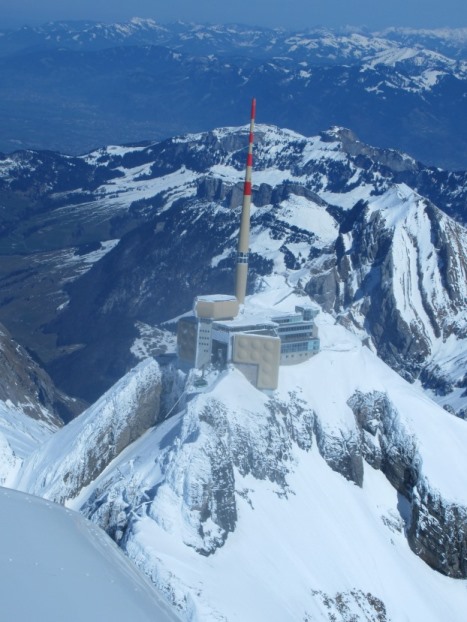
Now to the SUST inspectors. The had already analysed the data recorded by the Dynon EFIS during the accident flight, which I downloaded for them after asking the pilots for their permission, but they wanted to do some comparison flights with an identically configured model (same propeller, old style elevator, electronic instruments) before drawing any conclusions. My homebuilt is the only identical aircraft they could find, so they contacted me.
We did a number approaches to land with and without flaps to investigate what impact higher approach speeds have on the landing distance, meaning whether you can still perform a nicely flared landing on the main gear. The FOM of the SportCruiser only mentions 60 kts approach speed, which is definitely too high on final also from my own experience. I always fly around 52 kts on final, which makes the plane descent nicely and is still around 1.4 times the stall speed. I then reduce power early to make a touchdown on the main wheels at around 45 kts and also keep the nose up as long as practical, before letting the nose wheel settle.
The flights confirmed that when one approaches at a higher speed then the plane floats endlessly, especially with zero flaps where 60 kts gives the best glide angle. We did two approaches at 67 kts and had to do a go around both times after still being in the air more than half way down our 620 m runway due to flaring. If you want to be on the ground in 150 m, as students are trained, then you have to make a three point landing, pushing the aircraft onto the nose wheel, which is probably not good for it.
My plane still has the original, first series nose landing gear and I haven’t had any problems with it, while our club plane now receives the strengthened third generation gear.
The results of the investigation will be documented in an accident report, which will be published in a while on the website of the SUST (www.sust.admin.ch).
10.04.2015: After the short flight into the alps on Wednesday I had to promise my wife that we would do a longer flight soon, and as the weather was still the same we decided to go for what the Americans call a “100 $ Hamburger”, meaning flying somewhere for lunch, with the only difference that it was a 100 $ Pizza. Locarno Aerodrome, which lies south of the alps, has a very nice airport restaurant with excellent food. I love their Pizza Aeroporto with boletus mushrooms and very thinly sliced smoked ham, so it was an easy choice.
The weather was still blue sky from pole to pole, so I decided to cross the alps in a straight line, climbing straight to 10’500 ft.


The Chlöntalersee is always a good indicator for spring, as it is frozen he whole winter, As one can see most of the ice has however melted,…

…with nice reflections of some mountains on the surface.
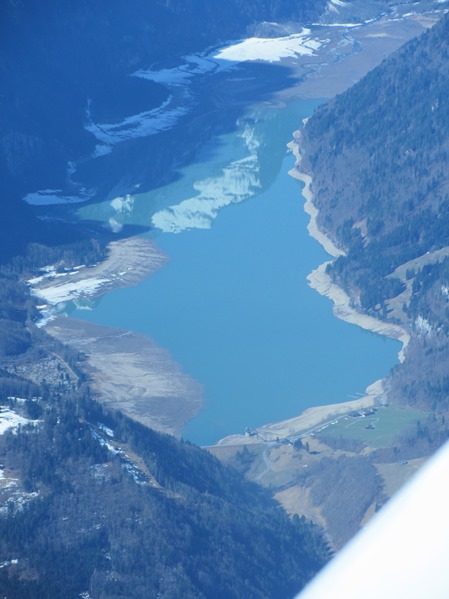
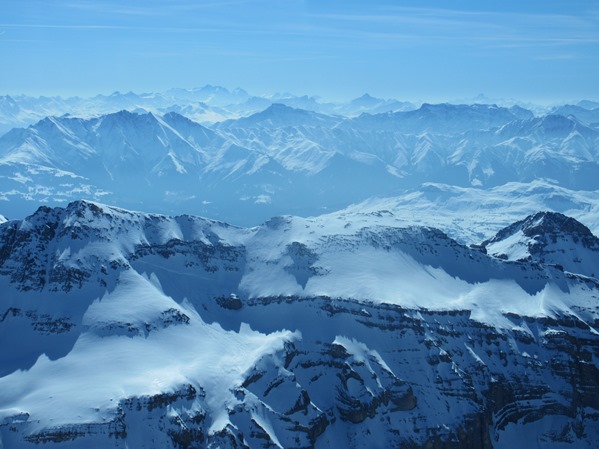
We then continued past the Tödi, which is close to 12’000 ft high…

…and then over the Lukmanier-Pass direction Ticino.
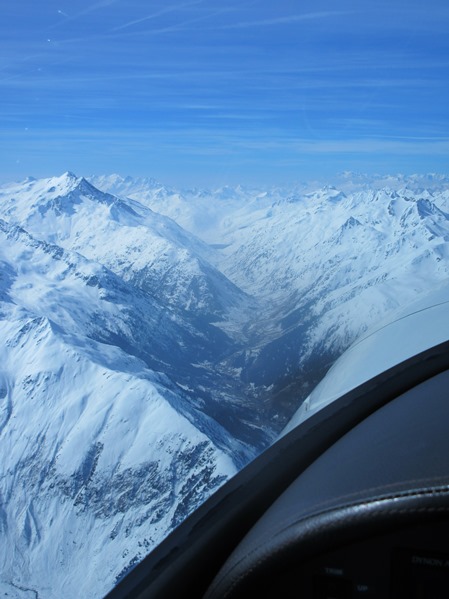
This time I kept a safe distance from the military radar on top of one of the mountains, but there was still a quite significant “knack” in the headset every time the radar beam hit us.

We then slowly descended into the Leventina valley, where the announced haze was indeed present. It looks however worse on the picture that it was due to looking into the sun.
Maybe half an hour later we already had our favourite pizza on the plate, eating outside in the sun with more than 20 degrees air temperature. What a treat after the long winter.

Already when we arrived we noticed a significant number of customs people with a mobile baggage scanner mounted in a van, and when we left a quite big business jet arrived. We were wondering what celebrity would get our of the jet, but then decided it was not worth waiting and left. My plane can be seen just left of the nose of the jet.

On the way back we climbed to 12’000 ft, with the haze quickly clearing the further north we got.


From high above we observed a ski plane landing on one of the glaciers, kind of an omen as when we announced our intention to land in Lommis 30 minutes later we were informed that a plane was lying on it’s back on the runway, making a landing impossible. It was another ski plane, which had landed on the grass runway with the skis still lowered, which made it brake so hard that it turned over the nose on it’s back.

We therefore diverted to St. Gallen, where we waited for about an hour before being informed that the runway in Lommis was soon to open again. As far as remember this is the first time in my flying career where I actually had to divert to the diversion airport.
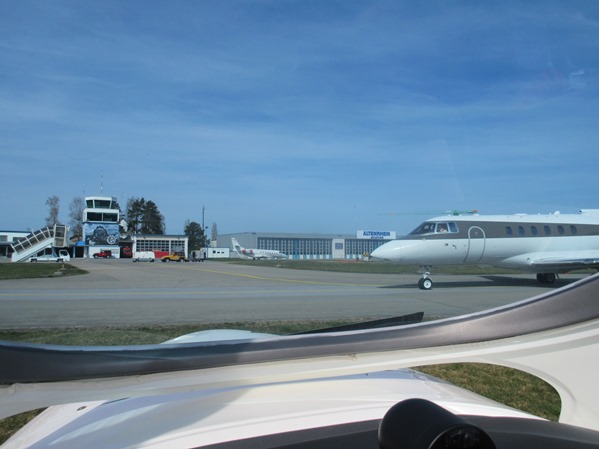
When we returned they just finished planning the runway where the plane had turned over. Luckily nobody was hurt and the plane was already moved to our maintenance hangar. A quick check confirmed that the plane received quite significant damage, but the owner asked us to check what it would cost to rebuild it.
11.04.2015: Today we had the annual general assembly meeting of the homebuilders club, this time in Birrfeld, some 40 minutes by plane west of Lommis (it would be closer if there wouldn’t be the CTR of Zurich Airport to circumvent). Even thought the weather was less nice than the preceding days I still decided to go by plane, as did at least around 15 other members. Below some of the planes which were parked on the tarmac when I left.
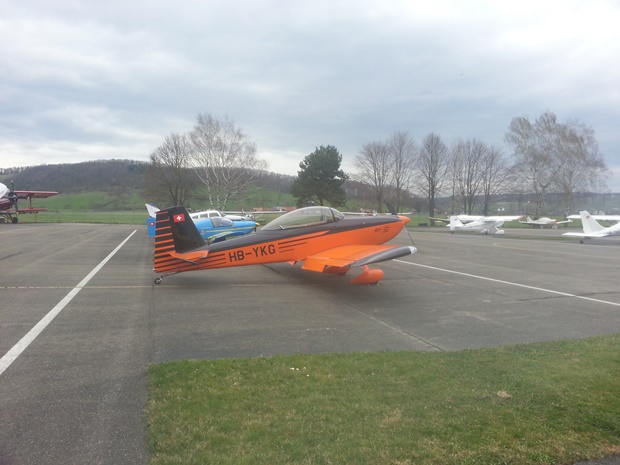
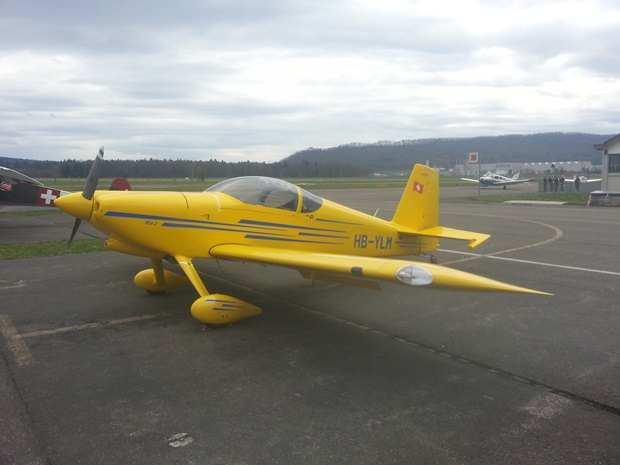

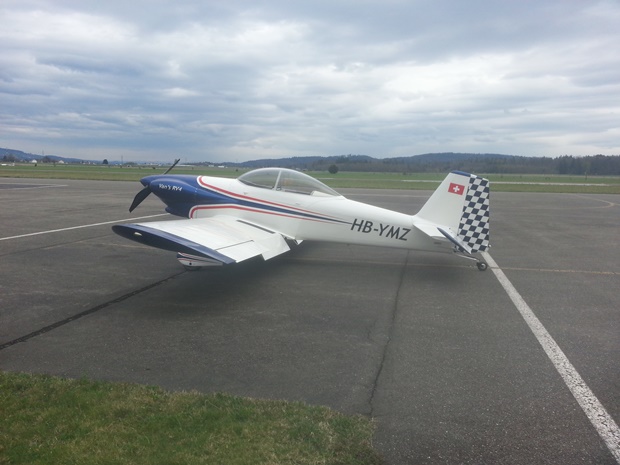
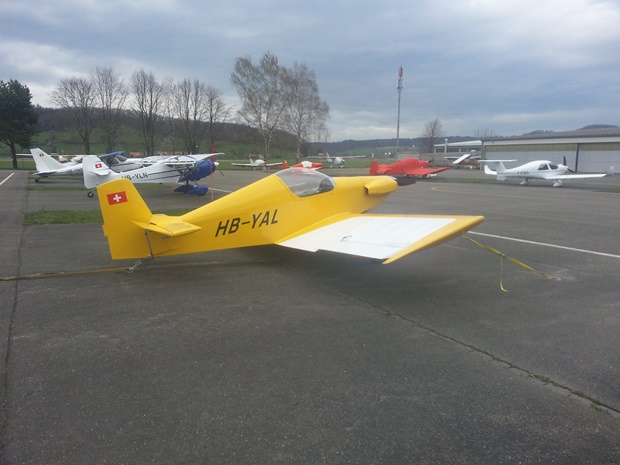
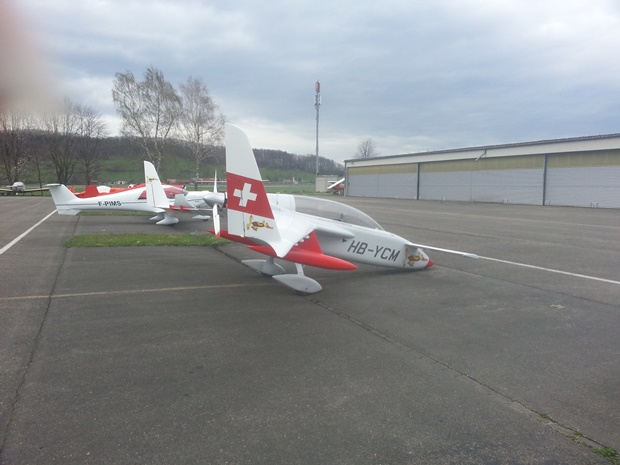

I flew back as I came, passing north of Zurich CTR below the TMA, which means less than 3’000 ft AMSL or close to the 500 ft minimum altitude in some places, such as below. Tthat radio tower is quite a good visual reference, as long as you are staying north of it you are clear of the CTR.
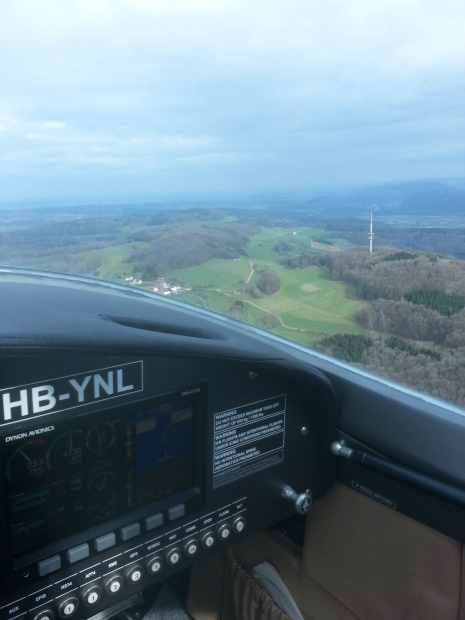
There were indeed some of the announced rain showers on the way back, so I gave my plane a wash by flying through one of them.
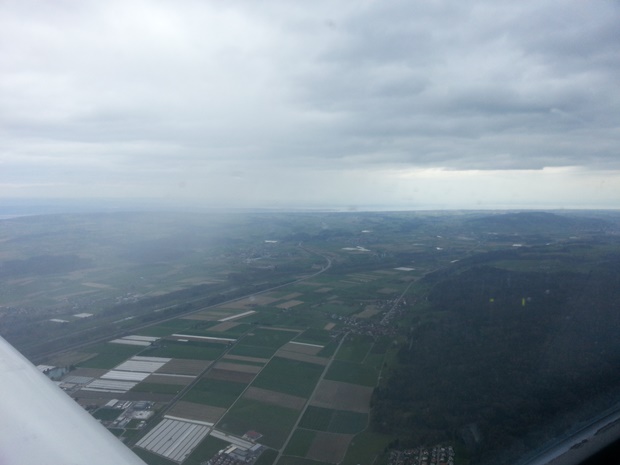
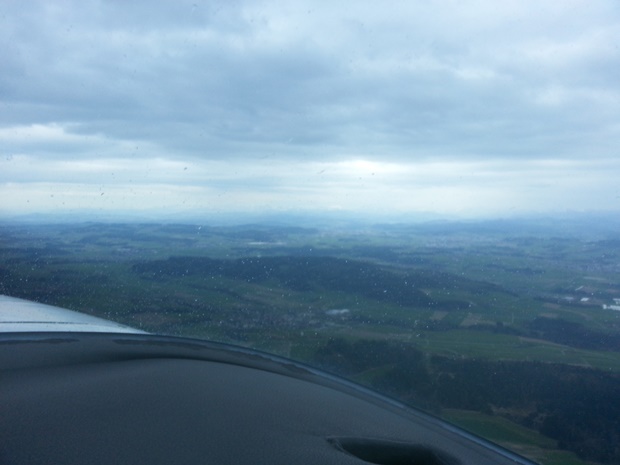
12.04.2015: Even though its Sunday I’m on my way to Asia on a business trip. I can however fly with my favourite plane (apart from my SportCruiser of course), the Airbus A380 from Singapore Airlines. It would be perfect weather to go flying, but I can’t complain as I have been flying nearly ten hours over the last four days.

I saw a Jumbo Jet parked in Zurich which looked like Air Force One, with what seems some satellite antenna installation on the roof, but the marking on the fuselage says Bahrain. So I guess its probably Bahrain One.


16.04.2015: I’m already back from my business trip, and it’s Aero time again. I landed in Zurich at 8:30 an headed straight for Friedrichshafen, as usual by train and ferry.

Due to our acquisition of three new planes (two Aquila and one Diesel Robin) I was busy the whole day just with meeting the respective suppliers, so I decided to go back again tomorrow.
17.04.2015: I’m at Aero again, as I haven’t had any time yesterday to look at things for myself. I had nothing special to do except buying some maps, so I just toured the exhibition halls, looking for eye catchers. The first one was the Quest Zodiac, which was parked on a foil that looked like gravel and in front of a poster of somewhere in North-western Canada or Alaska. For once a really nice stand, and of course also a great plane. That would be a really nice plane to go camping…
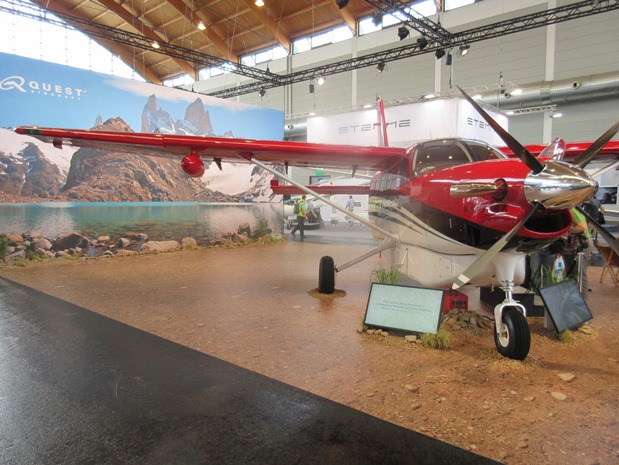
Just across the isle was one of it’s rival (partially), the PC-12, which would be another nice toy.

Then I saw one of the many SportCruiser clones, this time in a taildragger version with big tires and even bigger flaps, maybe that’s the way to go bush flying.

There was a very nice plane from Sweden too, which looked very promising, with high performance figures stated. If they can really achieve these figures then it might have some success.

It was even displayed with high end Garmin avionics (I couldn’t figure out the version), including autopilot.
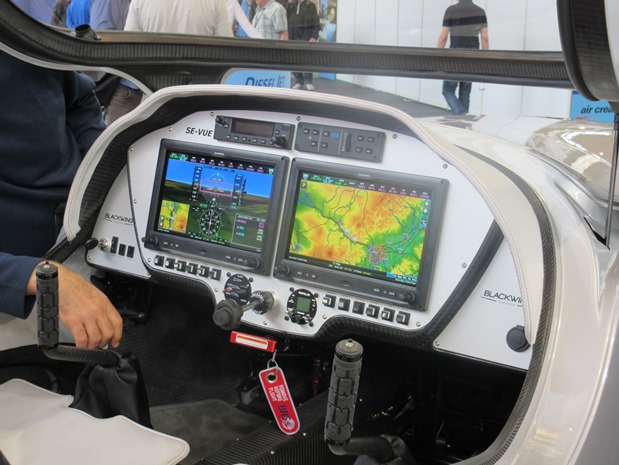
Some other sexy fast two-seaters were on display, such as the one below from a French manufacturer, with Spitfire shaped elliptical wings.

I also saw a high number of engine projects, mostly Diesel, such as the one below with around 110 hp. It weights 90 kg, which is more than a Rotax 912, but considering the reduced fuel load Diesel seems to become an alternative even in the 100 hp power range. The only problems will be whether any of the projects ever achieves series production and whether the manufacturer survives the certification effort.

Then there were some of the usual fantasy projects, such as this impeller driven “spaceship”, good to look at, but probably not to be seen at your local airport any time soon.

One of my homebuilders friend’s RV-12 was on exhibition at the VANs booth, together with an RV-7A from a German builder. That’s definitely easier than flying some company aircraft from Oregon to Friedrichshafen.

There was also a homebuilders booth, which to my opinion is just not peppy enough to attract a lot of people, too cluttered and some kind of unorganized. But they did have a nice poster on one of the walls…

I had promised myself that I would not take any pictures of gyroplanes this year, and there were many again, but I just couldn’t ignore the one below. That’s for once a cool design.


One issue that dominated the exhibition was electric or hybrid drives, such as this Pipistrel electrically powered basic trainer. Most of them claim around 45 minutes of flight on a single charge, which is probably sufficient for basic training. Pipistrel also sells the same plane with a Rotax engine, so a flight school could have a mixed fleet of both to cover all training needs.


There was a quite similar aircraft on display from a Chinese supplier, and they claimed a selling price of 50 k€, I wonder when we will see the first ones in the European sky.

The batteries are in modules, which can be swapped for a quick turnaround, but they also claimed a charging time of less than an hour.

Also the panel looked pretty neat, it looked like being close to production standard, not like a prototype.
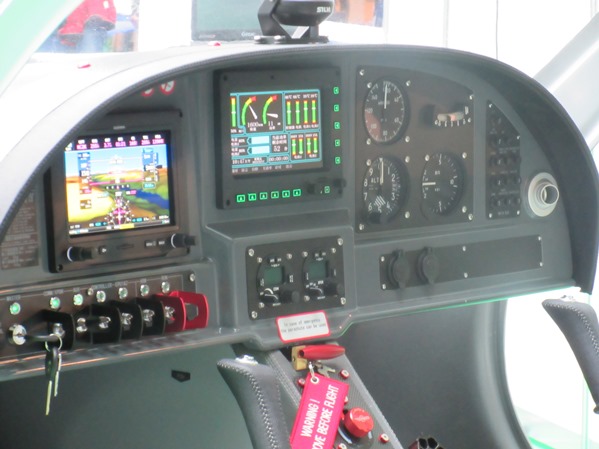
My employer also had a stand, my German colleagues developed a pretty neat hybrid drive system with a 250 kW electric motor that only weight around 50 kg. The interesting thing is that the whole system is fully redundant with parallel inverters and even two independent layers of windings in the electric motor and the generator.

That’s a pretty small motor for 250 kW, which will permit some neat aerodynamic solutions.

They are involved in a European research project where the whole system will be installed in a plane for flight testing, looking forward to seeing that fly.
Below two more electric planes on display…

The plane below claims several hundred km of range on electric propulsion. This is definitely a technology to keep an eye on, now that the batteries are slowly achieving capacities that make the whole system feasible. I have an electric car already, maybe one day I will convert my SportCruiser to electric propulsion.

There was a newly developed two-seater from a new Swiss supplier on display, with superior aerodynamics and claiming spectacular performance figures. Another thing to watch, especially that they already have a prototype flying since a while and had a production model on display.


Another Swiss project which has achieved European certification. I wonder whether these neat new planes can stop the decline in private flying, but I have some doubts.

Finally back to bush flying, a neat Super Cub derivative with some plastic huskies on display, an eye catcher. I just wonder what a Zebra look has to do with Huskies….
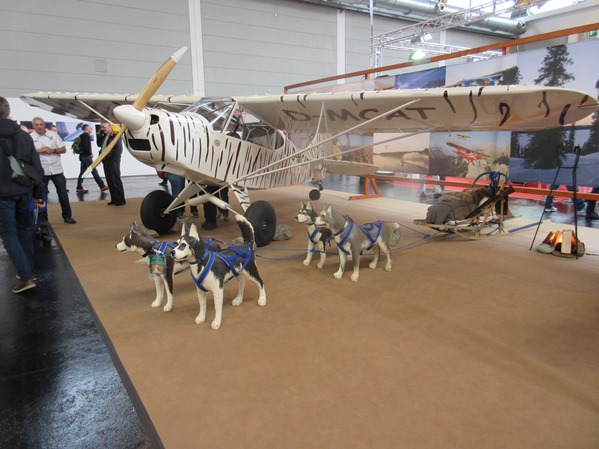
Last year the Flywhale seaplane ultralight was announced but finally not on display, but this year they have made it. Again a nice project, and as an eye catcher they had a second one on display in front of the main entrance (see below).

In the outside display there was a second hand SportCruiser on display, for only 49’000 €, but without any additional information. But I already have one…

It had the original nose landing gear with what seemed to me the UK modification.

Here finally the Flywhale on display in the little pond in front of the main entrance, definitely a way to catch attention.


18.04.2015: I finally found some time to update the Dynon software to version 5.5, which corrects a number of ‘minor errors, most notably the altitude error of the autopilot which always made the autopilot fly around 60 ft higher than the selected altitude. After doing this I did a short check-flight, in nice but kind of bumpy weather.

During the flight I also finally calibrated the angle of attack display, which I for whatever reason never did. I had installed an AoA capable pitot probe since the beginning, but somehow never found the time to calibrate it. The calibration is actually fairly simple, you start the respective function on the display, then you do a number of shallow climbs and dives in cruise speed, and then a number of stalls with an without flaps / power. The result is that I now have an angle of attack display in the lower left corner of the display, which also generates an audible stall warning.

Enlarged the display looks as below: When you reduce the speed and increase the AoA the green part slowly disappears, then the yellow until only the red part remains. You can set the point where the audible stall warning starts, which I have for the start set to the middle of the yellow arch. I only tested it in a 2 g turn, where it came on well above stall, and during the landing after my flight where the stall warning started during the flare just before touchdown. That’s the same behaviour as the stall warning on our Robin DR400.
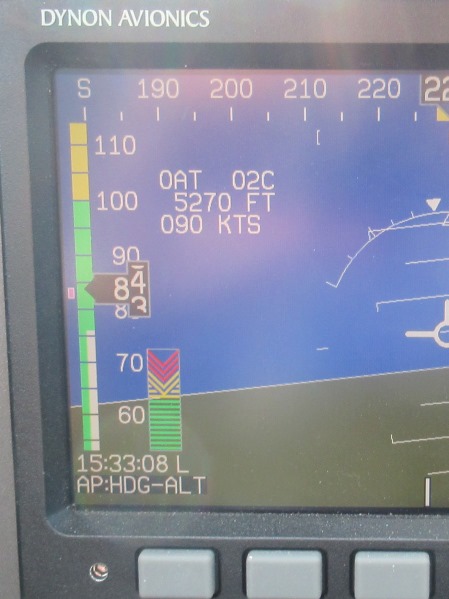
When flying along the lake I selected Friedrichshafen Tower to listen to aircraft departing from Aero, which was quite funny as many pilots obviously hadn’t listened to the ATIS before which contained very detailed instructions on how to proceed. The tower guy reacted with a stoic calmness, but also some humorist sound in his voice.
